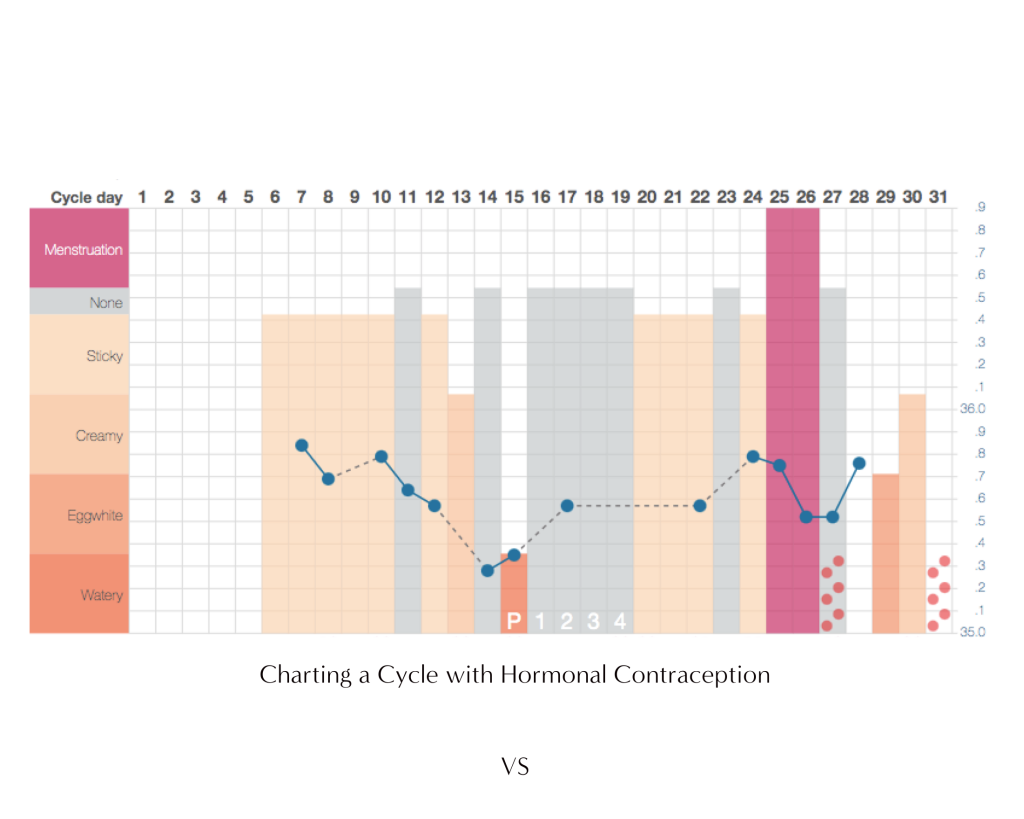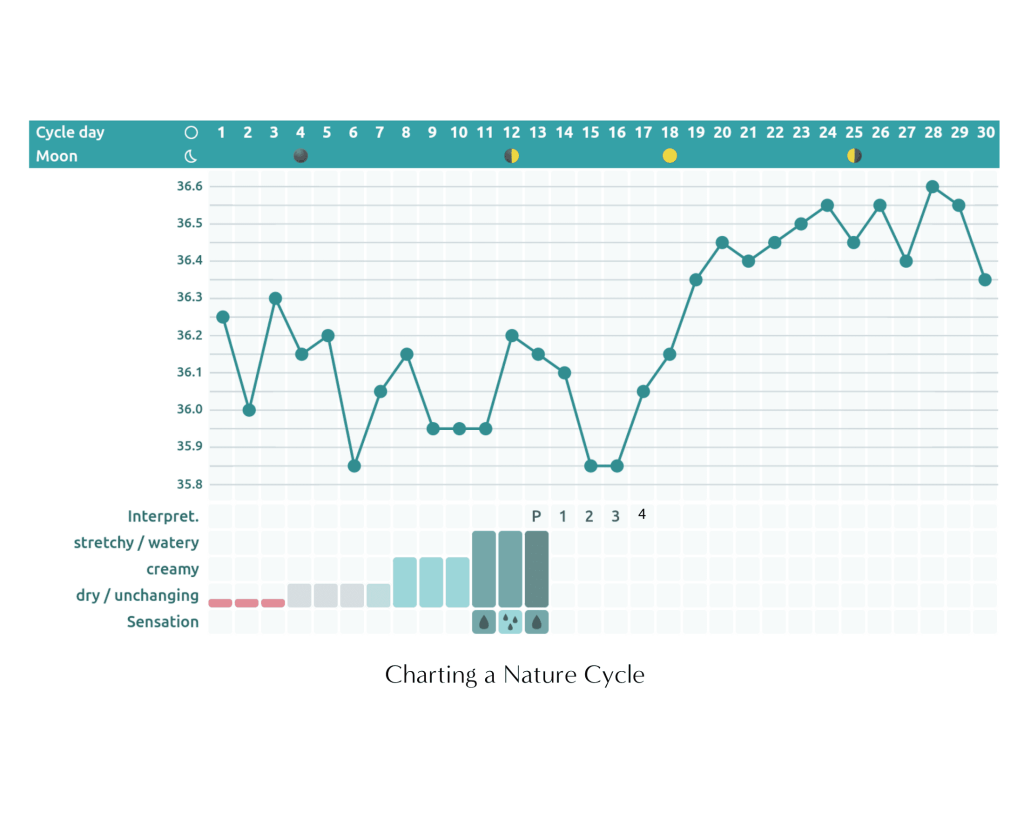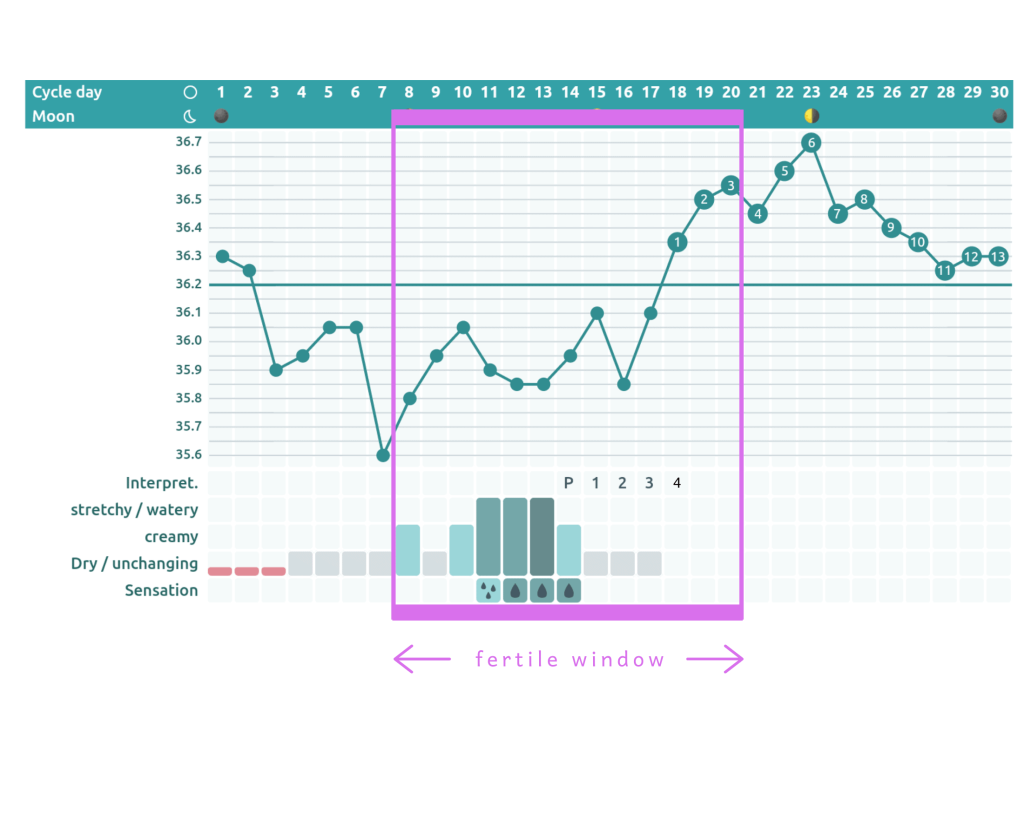04 Discussion Points & Choices
All Language Edition
Discussion Points and Choices
If you’re on the pill or other hormonal contraception now is the time to consider stopping. If you’re still on it, you won’t be able to practice charting your menstrual cycle accurately because hormonal contraception alters your hormones and your natural cycle.


Women who take the pill or other hormonal forms of birth control will not show a build-up in their cervical fluid pattern throughout their cycle.
Fertile Window
Most women need at least two or three cycles to chart their fertility signals confidently. If you’re coming off of hormonal contraceptives, it can take much longer.
There will be days, usually around one third of your cycle where you’ll be able to get pregnant if you’d like to. But if you don’t yet, you need to think about what you’d like to do during those times.
Start thinking about what you’d like to do about sex during your fertile window once you feel confident charting according to the method.

If you’re not prepared, the heat of the moment might get you. 100% of pregnancies occur during the fertile window. So if you are blaze’ — it’s not an if, but a when.
Many couples find that their desire to have sex is strongest when the woman is fertile. This can be super annoying! But it’s something to think on, and have a discussion with your partner about.
If you don’t want to get pregnant, how will you deal with an increased libido during your fertile window?
– You can abstain completely during the fertile phase.
– You can do other things and can make love without genital-genital
contact.
– You can continue to have sex with a barrier method of contraception.
It’s up to you, but these are the choices that are worth getting clear on before moving forward. And if you have a partner, these are the talks that are essential to speak about together so you can be on the same page.
>> Action Step: start considering how will you deal with an increased
libido during your fertile window.
Barrier Methods during a fertile window (optional)
Barrier methods of contraception create a physical barrier without disrupting your hormones.
Barrier contraceptives include:
– Condoms
– Diaphram
– Cervical cap
– Contraceptive sponge
Something to be aware of: If you’re thinking about using a barrier contraceptive during a fertile window, just know that this will bring down the effectiveness rate of the sympto-thermal method from 99.4% to the barrier method’s effectiveness rate.
Most effectiveness rates are presented as a percentage. However it is important to note that the percentage quoted does not reflect the percentage rate that a method will work or not work, but rather the percentage of people who will avoid pregnancy in a year of using that method.
Condoms
Condoms work as a latex barrier against semen to enter the vagina. They can be used with water-based or silicone-based lube, just be aware that oil-based lubes should not be used with condoms and they may cause them to break.
> Condoms are the only method that prevents against sexually transmitted diseases and pregnancy.
How effective are condoms:
Condoms are 98% effective with perfect use and 87% effective with typical use for preventing pregnancy.
Diaphragm
A diaphragm works as a barrier against sperm from entering the uterus by covering the cervix. Spermicide is put into the bowl of the diaphragm and along its edges for added protection and then it’s placed high into the vagina so it covers the cervix. After intercourse, the cervical cap is left in place for at least 6 hours, and no longer than 48 hours.
How effective are diaphragms:
Diaphragms are 84% effective with perfect use and 83% effective with typical use at preventing pregnancy.
Cervical Cap
A cervical cap, FemCap works as a barrier against sperm from entering the uterus by covering the cervix. Spermicide is put into the bowl of the cap and along its edges for added protection and then it’s placed high into the vagina so it covers the cervix. After intercourse,
the cervical cap is left in place for at least 6 hours, and no longer than 48 hours.
How effective are cervical caps
FemCap is 85.6% effective with typical use and is estimated to have a failure rate of 7.6%
Sponge
The Today sponge works by combining spermicide and a barrier against sperm from entering the uterus by covering the cervix. The sponge can be inserted up to 24 hours before sex and It starts working as soon as you activate the spermicide with water and inserted. After intercourse, the sponge is left in place for at least 6 hours, but no longer than 30 hours. (Unlike the diaphram and cap, you can safely have sex for up to 24 hours after putting in the sponge without reaplying spermacide, and still leave it in for the required 6 hours after sex.
How effective are contraceptive sponges
The contraceptive sponge is realistically 86% effective with typical use for women who have never given birth. For women who have given birth, the sponge is 78% effective.
>> Action Step: decide how you will approach your fertile window and order any chosen products accordingly so you’re prepared.


